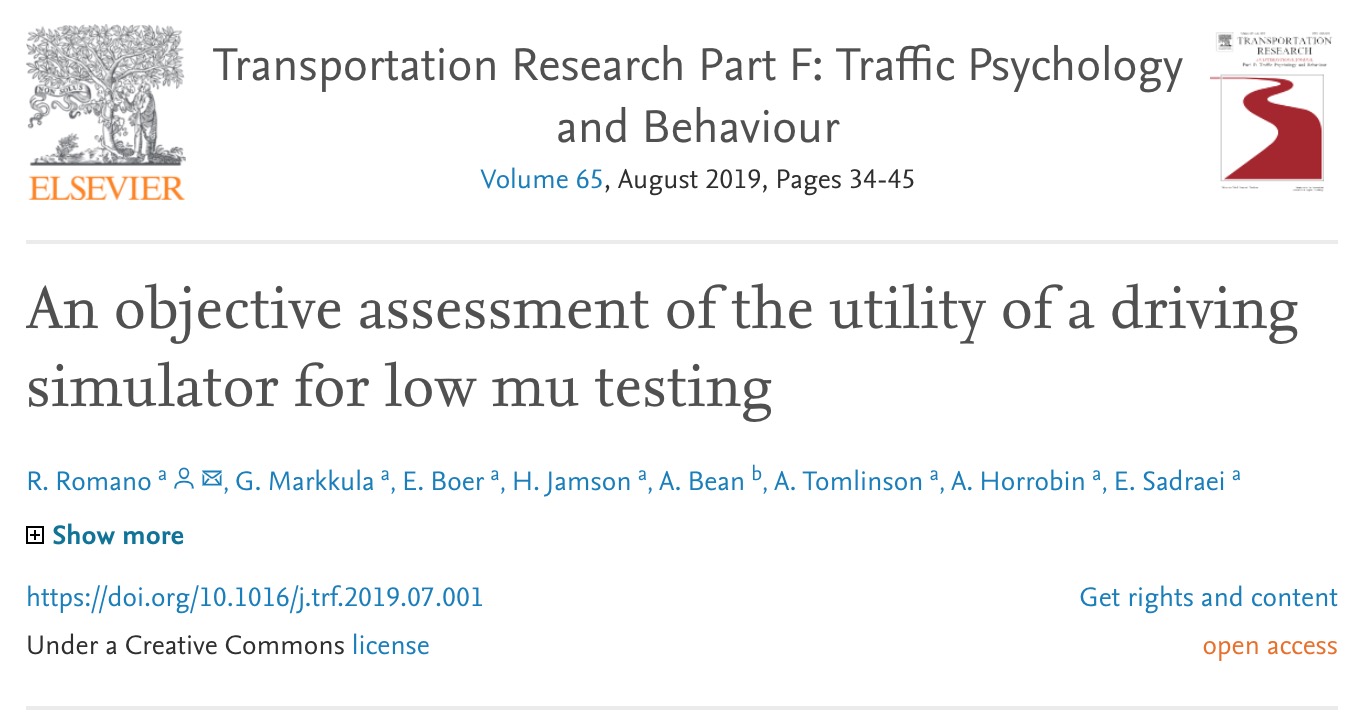New paper in TRF: Using driving simulators to support the vehicle development process.

A new paper by members of the Human Factors and Safety research group has recently been published in Transportation Research Part F: Traffic Psychology and Behaviour. The paper, titled "An objective assessment of the utility of a driving simulator for low mu testing", looks at using driving simulators to support the vehicle development process. The study compared driving and vehicle performance in the real world with that in the simulator using a metric developed at the University of Leeds: the Utility Triplet.
On the findings reported in the paper, lead author Professor Richard Romano, explained "We found that a driving simulator with a large motion base can be used to assist in the design process and allow test drivers to evaluate a vehicle design prior to a physical prototype. We also postulate that for the vehicle performance in the simulator to match the real world the tire forces predicted in the simulator must be very accurate and may require specific data collection for the manoeuvres of interest."
The study was supported by Jaguar Land Rover and the UK-EPSRC Grant EP/K014145/1 as part of the jointly funded Programme for Simulation Innovation (PSi). The research data supporting this paper are publicly available: https://dx.doi.org/10.17605/OSF.IO/VA5KR.
